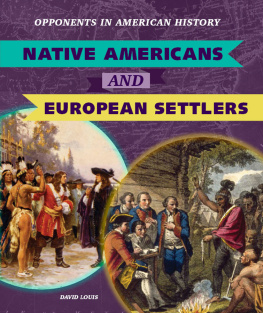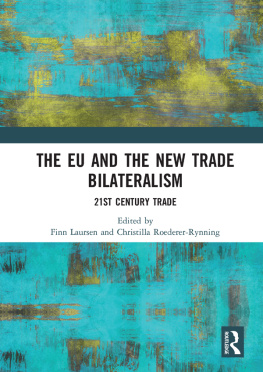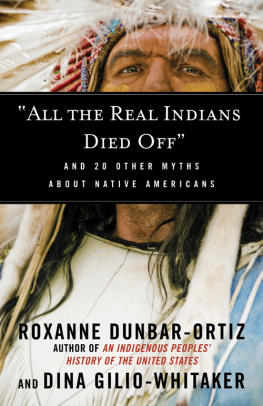Commerce by a Frozen Sea
Commerce
by a Frozen Sea
Native Americans
and the European Fur Trade
Ann M. Carlos
and
Frank D. Lewis
university of pennsylvania press philadelphia oxford
Copyright 2010 University of Pennsylvania Press
All rights reserved. Except for brief quotations used for purposes of review or scholarly citation, none of this book may be reproduced in any form by any means without written permission from the publisher.
Published by
University of Pennsylvania Press Philadelphia, Pennsylvania 191044112
Printed in the United States of America on acid-free paper 10 9 8 7 6 5 4 3 2 1
Library of Congress Cataloging-in-Publication Data Carlos, Ann M.
Commerce by a frozen sea : Native Americans and the European fur trade / Ann M. Carlos and Frank D. Lewis. p. cm.
Includes bibliographical references and index. ISBN 978-0-8122-4231-7 (hardcover : alk. paper)
1. Indians of North AmericaCommerceHudson Bay RegionHistory. 2. Fur tradeHudson Bay RegionHistory. 3. EuropeansHudson Bay RegionHistory. 4. Hudsons Bay CompanyHistory. 5. Hudson Bay RegionCommerceHistory. 6. Hudson Bay RegionEthnic relations. I. Lewis, Frank D. II. Title. E98.C7C375 2010 305.8970714 111dc22
2009044824
To Jim and Donna
Contents
Introduction. Native Americans and Europeans in the Eighteenth-Century Fur Trade 1
1. Hats and the European Fur Market 15
2. The Hudsons Bay Company and the Organization of the
Fur Trade 36
3. Indians as Consumers 69
4. The Decline of Beaver Populations 106
5. Industrious Indians 130
6. Property Rights, Depletion, and Survival 150
7. Indians and the Fur Trade: A Golden Age? 167
Epilogue. The Fur Trade and Economic Development 184
Appendixes
A. Fur Prices, Beaver Skins Traded, and the Simulated Beaver
Population at Fort Albany, York Factory, and Fort
Churchill, 17001763 189
B. Simulating the Beaver Population 192
C. A Model of Harvesting Large Game: Joint Ownership
Versus Competition 195
D. Food and the Relative Incomes of Native Americans and
English Workers 198
viii
Notes
Bibliography Index Acknowledgments
Contents
Introduction
Native Americans and Europeans in the Eighteenth-Century Fur Trade
We therefore beg your Majesty to accept these two elks and two Black Beavers which we now offer to You in terms of the Charter and in the same manner in which they were offered to your illustrious Father King George VI on the occasion of his visit to these territories in May, 1939.
Address of Hudsons Bay Company governor William Keswick to Queen Elizabeth II, Winnipeg, July 24, 1959
V isiting heads of state are routinely offered gifts. One unusual gift-giving ceremony took place on July 14, 1970, at Lower Fort Garry, the site of an old fur trading post, on the occasion of Queen Elizabeths visit to Manitoba. In the course of the ceremony, Queen Elizabeth was presented with a quantity of poplar along with a tank holding two live and very frisky beaver. When the Queen bent over the tank to inspect her new possessions, she turned to the Hudsons Bay Company governor, Viscount Armory, and asked Whatever are they doing? In the best diplo-matic tradition, the governor replied, Maam, its no use asking me. I am a bachelor. The incident, while amusing, was much more than that. The ceremony highlighted a relationship that spanned continents and centuries.
The gift to the Queen of England symbolized a commitment set out in a royal charter written three hundred years earlier during the reign of Charles II. The charter granted the Company of Adventurers Trading into Hudson Bay sole Trade and Commerce over what was then known as
2 Introduction
Ruperts Land, named after Prince Rupert, cousin of the king. Although not known at the time, Ruperts Land was a vast area that encompassed the entire drainage basin of Hudson Bay. Embedded in the charter, and among the conditions relating to the operation of the company, was the requirement: to be holden of Us, Our Heirs and Successors... yeilding [sic] and paying yearly to Us, Our Heirs and Successors... two Elks and two black Beavers, whensoever, and as often as We Our Heirs and Successors, shall happen to enter into the said Countries, Territories and Regions hereby granted. It was to be 257 years before the company had to make good on the provision. On August 9, 1927, in a ceremony in Winnipeg, the company presented to the Prince of Wales on behalf of his father, King George V, two black beaver pelts and two mounted elk heads. The Hudsons Bay Company fulfilled this condition of the 1670 charter three more times: in 1939, when King George VI came to Canada, and in 1959 and 1970, when Queen Elizabeth II visited.
The timing of the payments highlights the extraordinary longevity of the Hudsons Bay Company. Moreover, the ceremonies symbolize not just the link between the company and the English Crown but also the inter-twining of state policies and decisions in Europe with the trade environment of the New World. The two frisky black beaver given to Queen Elizabeth in 1970 are reminders of the basis of the trade and of the vast array of connections that brought the native peoples of the Canadian subarctic into the Atlantic economy. Even the site of the event, the former trading post of Lower Fort Garry, reminds us of the physical locations where exchanges between native and European traders took place, while the gift-giving nature of the ceremony brings to mind the structure of trade relations between Native Americans and Europeans, which included the aboriginal practice of exchanging gifts before the actual trading began. And, although the Hudsons Bay Company did not literally meet its charter obligation at the ceremony in 1970, those present must have been grateful that young poplar trees were substituted for the two elk.
The earliest interactions between Europeans and the native groups who occupied the North American subarctic had elements that were social, cultural, and religious, but theirs was primarily a commercial relationship. From the isolated exchanges between natives offering pelts to European fishermen, who, in turn, beckoned these same individuals with metal items, grew a broadly based trade. Native Americans had raw materials that were valued in Europe, and Europeans could supply a wide variety of goods not
The Eighteenth-Century Fur Trade 3
available in North America. This bilateral exchange provided new technologies that improved the natives ability to meet their basic needs of food and clothing, and it gave them access to a wide range of consumer goods previously unknown to them. In exchange, England and France received a steady supply of furs, most importantly beaver, for use in the European felting and hatting industries. Because the harsh subarctic winters produced furs of exceptional quality, beaver pelts from the Hudson Bay region could be used in garments, and some of the pelts imported to Britain were re-exported to the Continent for that purpose. But beaver pelts were valued primarily for their wool, which was turned into felt for high-fashion hats. At first beaver hats were purchased only by the wealthy, but as the industry grew in the seventeenth century and new felting techniques were developed in the early eighteenth century, hats with a lower beaver content became available to those with more modest incomes.
The commercial relationships that were formed between the Cree, Assiniboin, Chipewyans, and other Native American nations and those Europeans who came to trade involved forces that were economic, institutional, political, and environmental. How these forces played out on each side of the trading relationship and on each side of the Atlantic is the focus of this book. The history of colonial North America is often conceived in terms of those British North American colonies that formed the republic of the United States of America. Yet British North America also encompassed much of the area that would ultimately become Canada, which provides a counterpoint to our understanding of events farther south. Moreover, the Hudson Bay region stands apart even from the other northerly colonies, both French and British. It was an area without a structured government or governor and without permanent European settlers, due to its isolation and lack of agricultural land. There were no European trappers in competition with the natives, and there were no clergy or European women.
Next page








